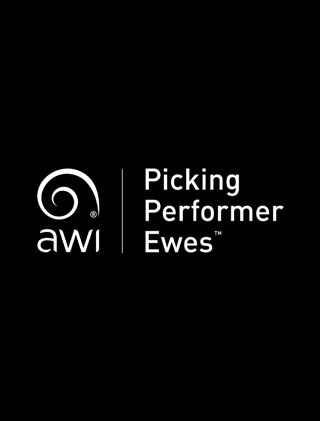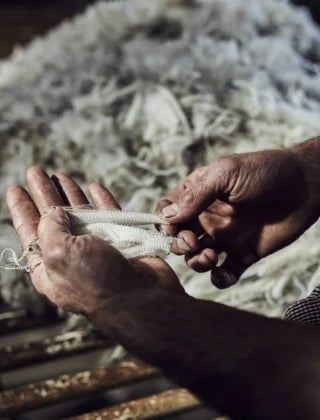Welcome to Australian Wool Innovation, a hub for the woolgrowers of Australia.
Not a woolgrower? Looking for information about wool products, wool care or wool processing?
The Woolmark Company is the global authority on wool. Visit Woolmark.com instead.
AWI working to lift the baa on shearing shed safety

AWI is working to lift the baa on shearing shed safety during Farm Safety Week, as one of nine RDCs collaborating as part of the Rural Safety & Health Alliance’s (RSHA) Research, Development and Extension Investment Strategy.
Running from Monday July 22 to Friday July 26, AWI as part of the RHSA’s Research, Development and Extension Investment Strategy, is addressing common safety and health challenges.
Australian Wool Innovation Country Manager Stephen Feighan said in addition to its shearer safety programs, AWI is working in collaboration with eight RDCs to improve farm safety through increased funding and a cross-sector strategic approach.
“At AWI our goal is to improve farm safety focusing on critical risks and influencing behaviour in the agricultural workplace; and capacity building, including leadership, education and communication to improve health and safety,” Mr Feighan said.
“One safety issue at the core of the wool sector is the health and safety of shearers. Shearing is a tough and physically demanding profession, with injuries to shearers being six times the all-industry average in Australia. Back injuries are a big issue due to their long rehabilitation time and associated lost productivity.
“A project funded by AWI aims to understand muscle fatigue and changes of movement to pinpoint high stress loads. This will help focus our research on potential wearable tech solutions for shearers to reduce the risk of injury while still allowing the high degree of manoeuvrability required for shearing.
“AWI is also working on a collaborative shed design project which allows for a straight drag from the catching pen to workstation, whilst also addressing safety and efficiency aspects for all shed staff. AWI’s funding to promote the ‘Shear-Jitsu’ technique is teaching an alternative method to catch and drag the sheep and have also been well received by participants.”
Additionally, AWI is working collaboratively with its RDC partners to continue to invest, in improving health and safety in Australia’s rural industries.
“This Alliance aligns best-practice health and safety strategy with cross-sectoral collaboration, which will ensure the research and extension undertaken is world-class, rigorous and fit-for-purpose,” Mr Feighan said.
“Conservative estimates put the economic impacts of on-farm deaths at $140 million per year with figures showing primary industries have eight times the fatality rate of other Australian industries.
“The RSHA Strategy will target sector-relevant critical risks such as tractor, quad bike, utility, truck, car, motorbike accidents, needlestick injury and chemical exposure. Mental health is also a top priority.”
Projects could include technology innovation, pre- and post-farm gate supply chain issues, data and reporting, extension, communication and leadership initiatives.
Those interested in submitting a preliminary proposal are encouraged to download the RSHA Strategy and register for updates in preparation for the opening of applications.
For more information, visit www.rsha.com.au.















